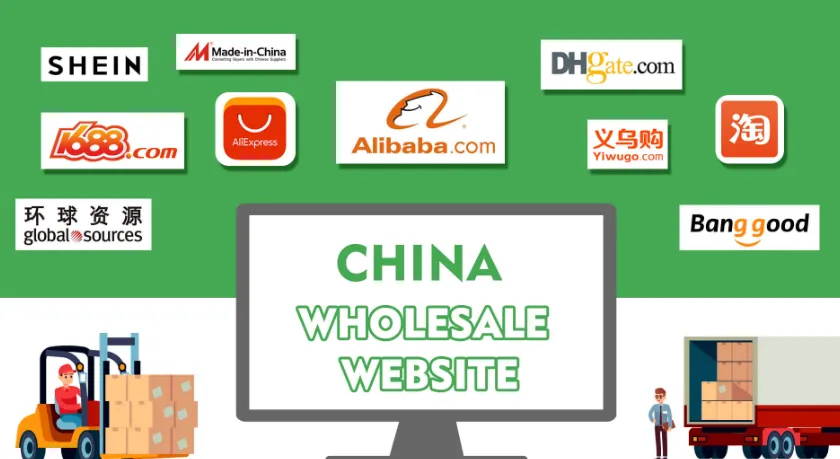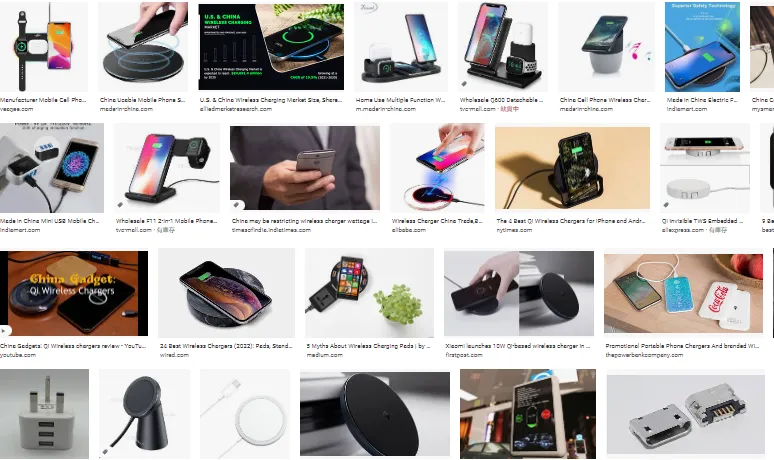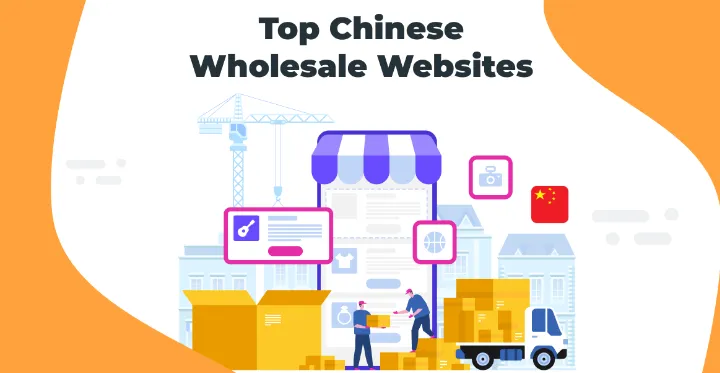Buying from China? 50+ Sourcing Websites Reviewed by a Pro

Let's be honest. You're not just looking for a list of websites.
You're looking for a reliable, cost-effective way to get products from China without getting burned. You've seen the stories: failed shipments, poor quality, and outright scams.
Here’s the thing: the platform you choose is only 10% of the battle. The other 90% is knowing how to use it like a pro.
I’ve been a procurement agent for over a decade. I’ve managed millions of dollars in orders, from simple plastic components to complex electronics. In this guide, I’m not just giving you a list—I’m giving you my entire playbook for sourcing from China safely, smartly, and sustainably.

Think of China’s e-commerce ecosystem like a toolkit. You wouldn’t use a sledgehammer to fix a watch. Similarly, you need to pick the right tool for your specific job. Let's break down your options.
(H2) The B2B Powerhouses (For Your Big, Custom Projects)
These are your go-to platforms for manufacturing, custom orders (OEM), and large bulk quantities. This is where you find the factories.
Alibaba.com: The giant. It has everything, but that’s the problem. You’ll find brilliant manufacturers and shady traders side-by-side.
Pro Tip: Never stop at the product page. Use the “Contact Supplier” button to start a conversation. Your goal is to determine if you’re talking to a factory or a middleman. Ask directly: “Are you the factory, or a trading company?”
Made-in-China.com: Often has more genuine factories than Alibaba, especially for industrial equipment and machinery. The interface isn’t as slick, but the quality of suppliers can be higher.
GlobalSources.com: The high-end player. Suppliers here are often verified and tend to target European and North American buyers. Expect better English communication but slightly higher prices. Ideal for sensitive IP or complex products.
(H2) The Wholesale & Dropship Hubs (For Faster Turnaround)
These platforms are perfect for ready-made goods, lower MOQs, and faster shipping.
1688.com: This is Alibaba’s domestic Chinese platform. Prices are 10-30% lower, but the entire site is in Chinese, and most suppliers don’t speak English. This is for advanced players or those working with a sourcing agent.
DHgate.com: Think of it as the Chinese eBay. It’s great for small quantities and sample orders. Buyer protection is decent, but quality control is a constant battle. Perfect for testing a product idea with minimal risk.
JD.com Business & Tmall Global: These are B2C giants that have B2B arms. You’re buying from authorized distributors, so authenticity is high. Excellent for branded consumer goods.
(H2) Your Secret Weapon: Sourcing Agent Platforms
What if you don’t have the time or expertise to vet 50 suppliers? That’s where we come in.
Platforms like Supplyia.com or our own services act as your local boots on the ground. We handle supplier vetting, negotiation, quality control, and logistics for you. The cost is a service fee, but it often pays for itself by avoiding one bad order.
When to use an agent? When your product is complex, your order value is high ($10k+), or you simply can’t afford a quality mistake.

This is the part most articles skip. Finding a supplier is easy. Finding a good one is hard. Here is my 5-step field test for any new supplier.
(H2) Step 1: The Company Profile Deep Dive
Business License: Ask for it. A legitimate supplier will email you a copy. Cross-check the company name and address with what’s on their website.
“Gold Supplier” etc.: See these badges? They just mean the supplier paid for marketing. Don’t trust them. Use them as a starting point, not a guarantee.
(H2) Step 2: The Communication Test
You’re not just buying a product; you’re buying a relationship. Pay attention to how they communicate.
Red Flag: Vague answers, poor English that doesn’t improve over email, and pressure to pay outside the platform.
Green Flag: They answer your specific technical questions, respond promptly, and are transparent about their capabilities.
(H2) Step 3: The Non-Negotiable Sample Order
Never, ever skip this step.
The Process: Pay for the sample and the shipping. This is normal. When you get it, put it through its paces. Test its function, measure its dimensions, use it as a customer would.
The Conversation: If the sample isn’t perfect, say so. A good factory will ask detailed questions and work to improve it. A bad one will make excuses.
(H2) Step 4: Smart Payment Terms – Your Financial Shield
This is where you protect your money.
Start with Alibaba Trade Assurance or PayPal: These offer buyer protection. Use them for your first order.
Graduate to T/T (Bank Transfer): After trust is built, you can move to T/T for better prices. The standard is 30% deposit, 70% before shipment. Never, ever pay 100% upfront.
The Pro Move: Use a Letter of Credit (L/C) for very large orders. It’s more paperwork, but it protects both you and the supplier.
(H2) Step 5: The Quality Control Inspection
For orders over $5,000, hire a third-party inspection company like QIMA or AsiaInspection. For a few hundred dollars, they will visit the factory during production or before shipment to check quality, quantity, and packaging. This is the single best investment you can make for peace of mind.
If you're a procurement manager, your goal isn't just the lowest price. It's the lowest total cost of ownership, which includes risk, quality, and sustainability.

(H2) Building a Sustainable and Ethical Supply Chain
Your customers care about this. Your investors do, too. Here’s how to action it.
Your Supplier Code of Conduct: Create a simple, one-page document outlining your expectations for labor practices, environmental compliance, and business ethics. Send it to potential suppliers and ask them to sign it.
The Compliance Question Set: Add these to your supplier questionnaire:
"Do you have a valid ISO 9001 (Quality) or ISO 14001 (Environmental) certificate?"
"Can you provide a recent audit report from Sedex or BSCI (social compliance)?"
"What is your process for managing production waste?"
Track the Right KPIs:
On-Time Delivery Rate: Aim for >95%.
Product Defect Rate: Track this per shipment. >2% is a red flag.
% of Suppliers Compliant with your Code of Conduct: Make this a strategic goal.
This might feel like a lot, so here’s a simple way to start.
Define Your Need: Be specific. Write down your product specifications, target price, and required MOQ.
Pick 2 Platforms: Start with one B2B platform (like Alibaba) and one wholesale platform (like DHgate) for comparison.
Shortlist 5 Suppliers: Use the vetting checklist in Part 2 to narrow it down.
Order Samples: From your top 2 choices.
To make this even easier, I've created a "Supplier Vetting Checklist" that you can download and use today. It condenses everything in this article into a single, actionable PDF.
[Download Your Free Supplier Vetting Checklist Here]
Sourcing from China can be your company’s biggest competitive advantage. It’s not about finding the cheapest goods; it’s about building reliable, high-quality, and profitable supply chains. Do your homework, trust the process, and don’t be afraid to ask for help.
Ready to source with confidence? Let’s talk.
1. Q: I've found a supplier, but their factory is far from a major port. How does this impact me?
A: It adds hidden costs and complexity. You'll face higher inland freight charges to get the goods to the port for shipping. It can also lead to longer lead times and more potential for damage during domestic transit. Always ask, "What is your distance from the Shanghai/Shenzhen/Ningbo port, and what are the inland freight costs?"
2. Q: What's the real difference between a 'Trading Company' and a 'Factory', and when should I use a trader?
A: A factory manufactures the product. A trading company sources from factories. Factories often offer better pricing and direct control, but can be less flexible. Traders are useful for sourcing multiple product categories from different factories or for smaller orders a factory might not accept. Don't avoid traders—just know who you're dealing with and factor in their margin.
3. Q: How do I protect my product design from being copied or sold to my competitors?
A: First, have suppliers sign a clear NDA (Non-Disclosure Agreement) before sharing detailed designs. For production, use a NNN Agreement (Non-Use, Non-Disclosure, Non-Circumvention). For the highest protection, split production of critical components between two different suppliers so neither has the complete design.
4. Q: A supplier is offering an incredibly low price, but wants 50% upfront. Is this a red flag?
A: A low price with a high deposit is a classic warning sign. It often means the supplier has cash flow problems and is using your deposit to buy raw materials. This puts you at high risk if they go out of business. Stick to the standard 30% deposit, or use a secure payment method. If the price seems too good to be true, it usually is.
5. Q: What are "tooling costs" or "mold fees," and are they negotiable?
A: These are one-time charges to create the custom molds or tools needed to produce your specific product. You own this tooling. Yes, they are often negotiable. A common strategy is to agree to a higher unit price in exchange for the supplier waiving the tooling fee, which makes sense if you're confident in long-term volume.
6. Q: My supplier is asking for a "PI." What is it, and what must it include?
A: A Proforma Invoice (PI) is a formal quote you request from the supplier. It's the blueprint for your order. A professional PI must include: a detailed product description, unit price, total amount, payment terms, Incoterms (e.g., FOB Shanghai), lead time, and port of loading. Never proceed without a signed PI.
7. Q: What should I do if my shipment is delayed due to a Chinese holiday, like Chinese New Year?
A: Plan for it, because it will happen. Chinese New Year shuts down production for 4-6 weeks. You must factor this into your timeline. Place your orders at least 3 months in advance. Confirm the supplier's holiday schedule upfront and get a firm commitment on the last production day before the shutdown.
8. Q: How do I handle a situation where the final product is good, but the packaging is wrong or damaged?
A: This is a common oversight. Specify packaging requirements in your PI and quality control checklist. If it arrives wrong, you have two choices: negotiate a partial refund from the supplier to compensate for the issue, or reject the shipment if the packaging is critical to the product's value (e.g., retail boxes).
9. Q: What is "dual sourcing," and why would I use it?
A: It means sourcing the same product from two different suppliers. It's a key risk mitigation strategy. It protects you if one factory has a fire, a quality failure, or sudden price hikes. The trade-off is higher management effort and potentially losing volume discounts. Use it for your most critical components.
10. Q: A supplier mentioned "FOB" and "EXW." What's the difference, and which is better for a new importer?
A: This is about responsibility and cost.
EXW (Ex-Works): You own the goods the moment they leave the factory door. You are responsible for all inland freight, customs, and shipping. This is complex for beginners.
FOB (Free On Board): The supplier gets the goods to the port and loaded onto the ship. You take over from there. For new importers, FOB is almost always the better choice as it's simpler and reduces the supplier's control over your logistics.
Contact us
Call Us: +86 193 7668 8822
Email:[email protected]
Add: Building B, No.2, He Er Er Road, Dawangshan Community, Shajing Street, Bao'an District, Shenzhen, China